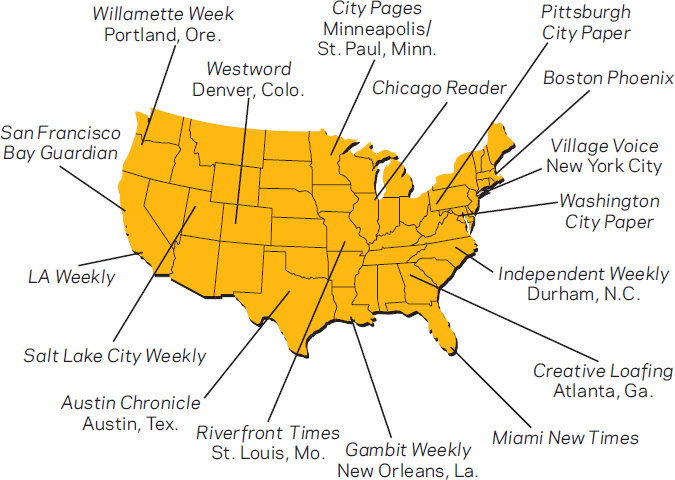The Underground Press
Printed Page 79

The mid to late 1960s saw an explosion of alternative newspapers—the underground press—that questioned mainstream political policies and conventional values. Springing up on college campuses and in major cities, underground papers were inspired by the writings of socialists and intellectuals active in the 1930s and 1940s and by a new wave of thinkers and artists including Allen Ginsberg, Jack Kerouac, LeRoi Jones, Bob Dylan, and Joan Baez. In criticizing social institutions, alternative papers questioned the official reports distributed by public relations agents, government spokespeople, and the conventional press. These publications often featured the voices of students, women, blacks, Native Americans, gay men, lesbians, and others whom the mainstream press had sidelined. The first and most enduring underground paper, the Village Voice, was founded in Greenwich Village in 1955. Though its circulation started to decrease by 2010 (as its online reach grows), it is still distributed free, surviving solely through advertising. Reflecting the consolidation now reshaping the newspaper industry, even the Village Voice has acquired other papers located in Los Angeles, Denver, Miami, Minneapolis, and other major cities. (See Figure 3.1 below for other alternative newspapers.)
